Volkswagen Caddy update released locally
|
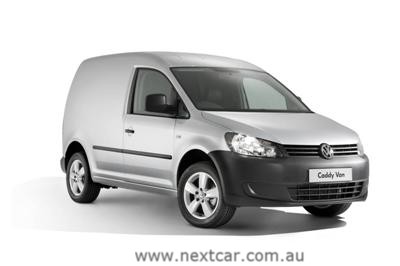 Volkswagen Caddy
Volkswagen Caddy
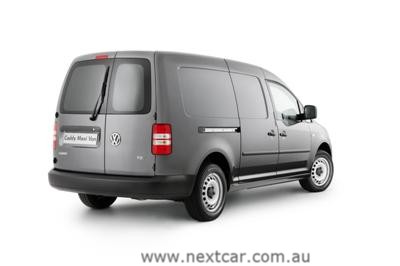 Volkswagen Caddy Maxi
Volkswagen Caddy Maxi
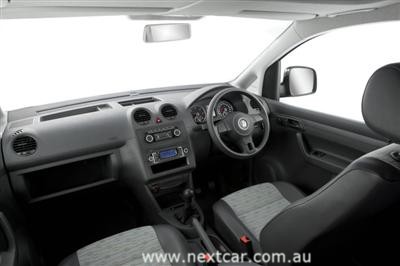 Volkswagen Caddy
Volkswagen Caddy
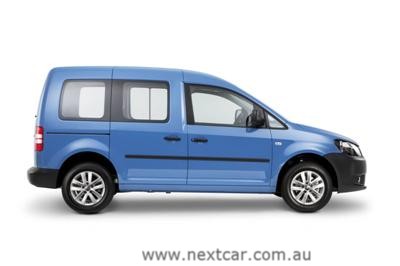 Volkswagen Caddy Life
Volkswagen Caddy Life
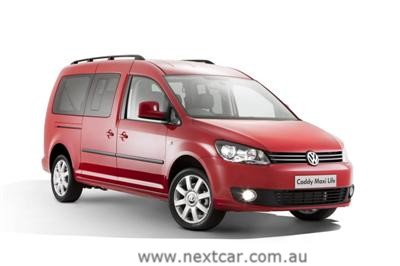 Volkswagen Caddy Maxi Life
Volkswagen Caddy Maxi Life
|
|
|
Home >
News >
Volkswagen
7th December, 2010
Volkswagen is this week launching an extensive update of the Caddy
range. The compact van with its practical rear sliding door system has been enhanced in several respects. With
new TDI and TSI four-cylinder engines and gearbox variations and the potential for reduced running costs make the
new Caddy one of the most innovative compact vans available.
In Germany the Caddy is the undisputed No.1 with a 43.6 per cent market share, while across Europe, at 16 per
cent it is also among the three best-selling vehicles of its kind. Here in Australia the Caddy is also a leader
in its segment. Globally the now superseded versions of the Caddy sold around 800,000 units in the six years
(2004 to 2009). The new Caddy promises a continuation of that story.
The Caddy is the first urban delivery vehicle and compact van in its class to be equipped as standard with ESP
on all models. The new Caddy will also be the only vehicle in this market segment available with the option of an
efficient 6 or 7-speed direct shift gearbox (DSG) and Hill Start Assist.
Also for the first time in the Caddy Life versions, it is possible to take out not only the optional third row
of seating, but the second row as well. For the short wheelbase Caddy this produces – loaded to the roof – a
cargo capacity of up to 3,200 litres; for the Caddy Maxi the figure is 3,880 litres.
The Caddy’s new petrol and diesel engines deliver extreme efficiency (all complying with the Euro 5 emission
limits). All of these are completely new to the range and equipped with turbocharging and direct fuel
injection.
Turbo diesel engines: The turbocharged four-valve (TDI) diesel engines deliver 75 kW and 103 kW respectively.
These two TDIs now use quiet and efficient common rail direct injection which is also linked as standard to a
diesel particulate filter.
Petrol engines: Two new TSI petrol engines are being used in the Caddy. Technical features of both high-tech
engines include a turbocharger and direct fuel injection. The fuel-efficient four cylinder engines develop 63 kW
and 77 kW respectively from a cubic capacity of 1.2 litres. The efficiency of the engines is demonstrated, for
example, by the 77 kW version with an average fuel consumption of only 7.0 litres per 100 kilometres for the
(equivalent to 163 g/km CO2 figures). Compared to the outgoing model consumption has been reduced by 1.2 litres
or 14.6 per cent.
New features: Standard on all versions are the new daytime running lights.
New design language
The debut of the current T5 range (Transporter, Caravelle and Multivan) earlier this year saw the launch of
the first Volkswagen Commercial Vehicles model with an exterior bearing the company’s new design "DNA". The
focus here is on giving the front and back of the vehicle a very clear, horizontally structured appearance. All
of the surfaces and lines are precise. At the front, the radiator grille and headlights form a concise,
unmistakable unit.
New design DNA defines contours of the latest Caddy
The Caddy making its debut now consequently has a completely redesigned front section. As with the T5, the
radiator grille and the headlights form in stylistic terms a single unit, with the horizontal lines of the
grille continuing all the way into the headlight clusters.
Front section: The radiator grille once again forms a single unit with the bottom part of the bumper.
Integrated into the grille is the VW badge, which has also been redesigned. Depending on the model, the bumper
is finished either in anthracite or vehicle body colour. Incorporated into this section are the new optional
fog lights with a cornering light function. These fog lights come standard on Caddy Maxi Life and can be
optioned on the Caddy Life and van models.
On the upper front section the bonnet and mudguards have also been completely redesigned. On the rear part
of the roof one detail will in future be missing: the aerial. As on the T5 range, it has been moved into the
external mirror out of harm’s way.
Design
Side section: The main features of the profile of the new Caddy are three new alloy wheel designs (15, 16
and 17-inch) and a striking character line that runs from the headlights all the way to the A-pillar's
triangular windows. The Caddy Maxi Life for the first time is now also being offered with roof rails as
standard, thereby complementing its silhouette. Meanwhile the side section’s clear basic concept has been
successfully transferred into the overall design. Here it’s the wide-opening sliding doors and the clear
contours that underline the Caddy’s confident character. Rear section: At the back it’s the restyled lettering,
the rear lights and the redesigned VW badge that catch the eye. The number plate recess (on the Caddy Maxi Life
in vehicle body colour with a chrome strip) and the tailgate handle - now electrically operated as on the
Multivan - have also been remodelled.
Dimensions: The Caddy’s external dimensions remain almost unchanged. With no roof rails the short-wheelbase
van is 1.823 metres high (Caddy Life 1.822 metres), 4.406 metres long (both Caddy Van and Caddy Life) and
(excluding exterior mirrors) 1.794 metres wide. The long-wheelbase van is 1.836 metres high (Caddy Maxi Life
1.861 metres), 4.876 metres long and 1.794 metres wide (for both Caddy Maxi Van and Caddy Maxi Life).
Improved flexibility
- • Removable seats increase cargo space to up to 3,880 litres
- • New upholstery, steering wheels and controls
The new Caddy features an enhanced interior design. In addition to numerous detail modifications, such as
new controls, steering wheel and materials, Volkswagen Commercial Vehicles has also improved the flexibility
of the Caddy, which is now available - depending on version and specification - with two to seven seats. For
the first time in the Caddy Life version, it is possible to completely remove, not only the optional
third-row bench seat, but the second row of seats as well. For the Caddy life this provides an enlarged cargo
space of up to 3,200 litres (Caddy Maxi Life: 3,880 litres), and a continuous level cargo area of 1,781 to
2,250 (Caddy Maxi) millimetres in length.
The new Caddy's interior in detail:
Front seats – the workplace for driver and front-seat passenger - all versions of the new Caddy are fitted
with new trim fabrics in new designs. The interior is further refined by new instruments and sporty,
three-spoke steering wheels. Similarly eye-catching on the central console are the new controls for the manual
or automatic (Climatronic) air conditioning system.
Electro-mechanical power steering: The new steering wheels are linked to a power steering system that works
on an electromechanical basis. This has many advantages. The driver benefits from the wheel actively restoring
its home position and therefore an improved feeling of central alignment. The steering system also assists by
making it easier to make corrections when driving in side winds or on roads with a camber to one side.
Interior
In combination with ESP, being fitted as standard across the range, the steering system also provides a
counter steer recommendation in critical situations. Last but not least, the electro-mechanically powered
servo-assistance produces a fuel efficiency benefit.
Storage system: Furthermore the new Caddy also makes everyday life on board easy for driver and passengers
alike. Depending on specification there are for instance up to 24 storage compartments or nets located in the
doors (including in the front for 1.5-litre bottles), the central console and armrest, the dashboard, the
floor in front of the second row of seats, under the driver’s seat and in the roof. The storage system also
includes two drink holders between the front seats and another cup holder in the end of the central console
in front of the second row of seats.
Second row/Cargo space – room for three and lots of luggage - for the Caddy Life, three seats in the
second row come as standard. These consist of a two-seat bench and one single seat (2/3 to 1/3). The seatbacks
in each case can be folded forward onto the seats and the complete seat unit then folded forward again.
Locking the folded seats in place has been made much easier on the new Caddy. In the five-seater Caddy with
short wheelbase completely folding up the second row of seats provides a load capacity when packed to the roof
of 2,020 litres. In the case of the 0.47 metre longer Caddy Maxi Life the cargo space provided is 3,700 litres
(with seats in place) in capacity. Four robust, solidly fixed load-lashing rings in the load compartment
simplify the safe anchoring of items being carried.
In just two simple steps it is now possible for the first time to completely remove the second row of seats.
In this configuration cargo space length and capacity are, as mentioned above, 1,781 millimetres and 3,200
litres respectively (five-seater). The corresponding figures for the five-seat Caddy Maxi are 2,250 millimetres
and 3,880 litres. The narrowest width between internal wheel arches is an ideal 1.17 metres in all Caddy models
except for the Caddy Maxi Life (1.12 metres). The Caddy’s second-row seats are also equipped with
height-adjustable head restraints and three-point safety belts.
Third seating row/Cargo space – Even more flexibility
A third seating row is now available optionally for the Caddy Life and comes as standard on the Caddy Maxi
Life. It provides seating for two additional people. The seatback can also be folded down. The outer seat of
the first row, which can always be individually folded forward, enables passengers to get into and out of the
third row easily, with the handling of the seats in this area also significantly improved.
Compact vans with new nomenclature
Volkswagen has tailored the new Caddy more thoroughly than ever to its extremely wide range of users,
their lifestyles and work scenarios. In the process the specification levels have in part been reconfigured.
Essentially there are still two basic categories of the Caddy: the commercial vehicle, i.e. the city delivery
vans and the compact vans designed for both business and non-business use.
In urban delivery van guise the Caddy continues to be available as a panel van (two-seater, including no
side windows at the back). This model is fitted as standard with a sliding door on the left-hand side and
standard ESP. In the new Caddy van, both the driver and front-seat passenger sit on hardwearing fabric seats
in new ‘Place’ pattern, with the outer sections of each seat and the head restraints in anthracite.
The Caddy’s new model lines in detail
The Caddy Life: The Caddy Life is equipped with the latest generation ESP, front airbags, Isofix child-seat
fittings on the outer seats of the second row, daytime-running lights, the now removable second row of seats
and up to 3,030 litres of load space. The seat covers have also been redesigned in the ‘Takato’ pattern.
Lateral stripes on the seat centres and backs contrast here with anthracite outer sections and head
restraints.
Further standard features on the Caddy Life include: central locking with remote control, two storage bins
on the dashboard, storage compartments in front of the second-row seats, left-side sliding door with an
opening width of 0.7 metres, safety steering column adjustable in height (+/-20 millimetres) and length
(+30/-20 millimetres) and hubcaps for the 15-inch steel wheels (tyres: 205/55 R15). The Caddy Life is
combined with the 75 kW 250 TDI engine and is available with 5 speed manual and 7 speed DSG transmissions.
The Caddy Maxi Life: This top model boasts additional exterior features including: new roof rails (100 kg
load capacity), painted bumpers, 16-inch alloy wheels, a chrome trim set (including radiator grille, fog lamp
rims and top section of the number plate recess), H7 headlights, tinted side windows (from the B-pillar),
tinted rear window and up to 3,880 litres of load space.
The Caddy Maxi Life interior is enhanced by a height-adjustable central armrest (in the front), drawers
under both front seats and a front passenger seat that is also height adjustable, plus leather steering wheel,
leather gearshift knob and leather handbrake lever 'grab'. In terms of functionality, the range of features
is supplemented by details such as: the RCD 310 radio/CD system equipped with additional interfaces, more
power and a bigger display, air conditioning, a multi-function display (including on-board computer), cruise
control, and a Light & Sight package (including dusk sensing headlights with ‘coming home’ function, rain
sensing wipers and auto dimming rear view mirror). The seat covers in the (anthracite) ‘Cheyenne’ pattern
also provide a particularly refined look.
New radio/navigation system
Also offered as an optional radio/navigation system is the RNS 510 model. It provides features such as a
6.5-inch touch screen, DVD player, voice control, an SD card slot and an extremely fast 30-gigabyte hard
drive. In terms of radio/CD systems, the range includes the RCD 210, RCD 310 and RCD 510.
|
|
|

Self-Catering Holiday
Accommodation in
Denmark, WA
..... more
|
|
|
New engines with fuel efficiency benefits of up to 14.6 per cent
The new engines offered in the Volkswagen Caddy being launched this week are new to the range and follow
the downsizing principle - with the reduced cubic capacity being compensated for by turbocharging and cutting
edge direct injection technology. As a result, they achieve fuel consumption savings of up to 14.6 per cent.
Petrol engines in detail – the TSIs
Two new TSI petrol engines are being used in the Caddy. A feature of both engines is turbo and direct
injection. The fuel-efficient four cylinder engines develop 63 kW and 77 kW respectively from a cubic capacity
of 1.2 litres.
1.2-litre TSI 160 delivering 63 kW: The ‘small’ TSI consumes on average 6.9 litres of fuel per 100
kilometres. Yet it still has respectable performance and acceleration. The 63 kW TSI reaches top performance
at 4,800 rpm and the maximum torque of 160 Newton metres is available from 1,500 - 3,500 rpm.
1.2-litre TSI 175 delivering 77 kW: Just how efficient the two TSI engines are is also shown by the 75 kW
version, which has an average fuel consumption of only 7.0 litres per 100 kilometres. Compared to the previous
model, consumption has thus been reduced by 1.2 litres or, as mentioned above, 14.6 per cent. This four-cylinder
engine achieves its maximum performance at 5,000 rpm, likewise transferring its maximum torque of 175 Newton
metres to the crankshaft at 1,550 rpm and above.
Diesel engines in detail – the TDIs
The diesel engines deliver 75 kW and 103 kW. Each of these four cylinder engines works with quiet and
efficient common rail direct injection, which replaces the outgoing model's unit injector systems. All TDIs are
linked as standard to a diesel particulate filter. The 75 kW TDI can be combined as an option with a
seven-speed DSG. For the more powerful 103 kW TDI there is a 6-speed DSG available.
In technical terms the new Caddy’s 1,598 cc and 1,968 cc TDIs mark the highest standard in this segment of
the market. The diesel fuel gets injected directly into the combustion chambers via the common rail system. The
multiple injections and volumes of fuel are precisely controlled via special piezo actuators.
The 1.6-litre TDI 250 delivering 75 kW: As outlined above, this engine makes the Caddy the most
fuel-efficient model in the range. Yet the 5.7-litre average fuel consumption for the Caddy Van version (Caddy
Life and Caddy Maxi Van 5.8 L/100 km, Caddy Maxi Life 5.9 L/100 km) also comes with performance. The engine
develops its maximum torque of 250 Newton metres from as low as 1,500 rpm.
2.0-litre TDI 320 delivering 103 kW: The 103 kW version of the new Caddy is also extremely fuel-efficient.
Powered by this engine, Volkswagen’s all rounder needs just 6.3 litres of diesel per 100 kilometres for the
Caddy Maxi Van and 6.5 litres of diesel per 100 kilometres for the Caddy Maxi Life (166 g/km CO2/171 g/km CO2).
At practically any engine speed, the TDI also excels with outstanding traction, as it delivers a maximum torque
of 320 Newton metres from as low as 1,500 rpm. Top performance is at 4,200 rpm.
DSG gearbox
Volkswagen is the only manufacturer that offers a direct shift gearbox as an option in the urban
delivery/compact van market segment. In the case of the new Caddy it is offered for the 1.6-litre TDI 250 and
the 2.0-litre TDI 320. Taking into account the maximum torque that needs to be handled for each engine, a
6-speed DSG is used in the Caddy 2.0-litre TDI 320 and a 7-speed version in the 1.6-litre TDI 250.
Features of both DSG versions are extreme economy and dynamic shifting of the gears. In addition to the
number of forward gears, other factors that differentiate the DSGs technically include the types of clutch.
While in the 7-speed DSG two dry clutches are used, the 6-speed DSG has a dual clutch that runs in an oil
bath. Whichever gearbox is fitted, however, one fact is true: even the most experienced drivers cannot change
gear anything like as quickly as the DSGs can! The direct shift gearboxes also have the potential to reduce
fuel consumption and correspondingly emissions. Each DSG version is application specific: while, thanks to its
torque rating, the 6-speed DSG shines in particular in combination with the high torque engines (up to 350
Newton metres), the 7-speed DSG is ideally combined with the smaller engines (up to 250 Newton metres).
The new Caddy Van Pricing*
Caddy Van
Caddy Van TSI 160 5 Speed Manual $21,990*
Caddy Van TDI 250 5 Speed Manual $26,650*
Caddy Van TDI 250 7 Speed DSG $29,650*
Caddy Maxi Van
Caddy Maxi Van TSI 175 5 Speed Manual $24,990*
Caddy Maxi Van TDI 250 5 Speed Manual $27,990*
Caddy Maxi Van TDI 250 7 Speed DSG $30,990*
Caddy Maxi Van TDI 320 6 Speed DSG $32,990*
Options
Metallic Paint $790
Colour bumpers, mirror cover & doorhandles $890
Rubber Floor rear/LWB (Maxi Van) $490
Tailgate (No Cost Option) $ –
Window Package (fixed windows, Caddy only) $790
RHS Sliding Door (Caddy SWB only) $690
16" Alloy wheels "Siracusa" - not 63kw TSI $1,690
Light & sight with rain sensor $390
Front Side (head/thorax) Airbags $890
Park Distance Control rear $590
Cruise Control (Caddy only) $590
The new Caddy Life Pricing*
Caddy Life
Caddly Life TDI 250 6 Speed Manual $28,990*
Caddly Life TDI 250 7 Speed DSG $31,990*
Caddy Maxi Life*
Caddy Maxi Life TDI 250 7 Speed DSG $39,990*
Caddy Maxi Life TDI 320 6 Speed DSG $41,990*
Options
Metallic Paint MP $790
Dark Tinted Glass in passenger area $490
Alarm System with back-up horn $490
Multifunction Leather Steering Wheel - Caddy Life Only $790
Colour bumpers, mirror cover & door handles - $490
Caddy Life Only
Additional 2 Seat Bench - Caddy Life Only $690
Roof Rails - Caddy Life Only $490
Front Side (head/thorax) Airbags - Caddy Life Only $890
Park Distance Control Rear - Caddy Life Only $590
Fog lights with corner function - Caddy Life Only $490
Caddy Maxi Life
17" Alloy wheels "Zolder" Caddy Maxi Life Only $790
NOTE: * Prices shown are the manufacturer list prices which exclude the traditional on-road costs
(such as dealer delivery fees and the state/territory statutory charges). Additionally, prices, fees and
charges are subject to change without notice.
|